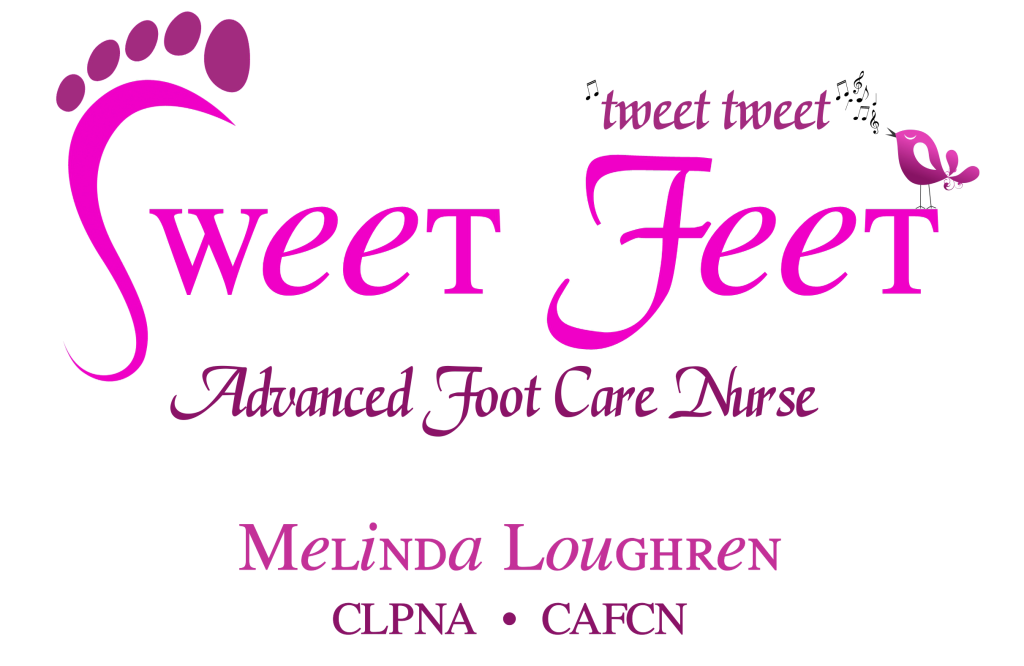Why is Foot Care Important?
Your skin is your body’s 1st line of defence. Any nicks or cuts can create an opportunity for bacteria to enter your body producing a risk for infection. Trust your feet with a professional who specializes in Foot Care!
What are Bunions?
Misaligned big toe joints that swell and become tender, causing the first joint of the big toe to slant outward and the second joint to angle toward the other toes. Bunions tend to be hereditary, but can be aggravated by shoes that are too narrow in the forefoot and toe. Surgery is frequently performed to correct the problem. Padding may relieve pain and friction.
What are Hammertoes?
Usually stemming from muscle imbalance, this condition occurs when the toe is bent into a claw-like position. Hammertoe can affect any toe, but most frequently occurs to the second toe, when a bunion slants the big toe toward and under it. Selecting shoes and socks or toe enhancer accessories that do not cramp the toes may help alleviate any aggravation of pain or discomfort.
What are Heel Spurs?
Growths of bone on the underside, forepart of the heel bone. Heel spurs occur when the plantar tendon pulls at its attachment to the heel bone. This area of the heel later calcifies to form a spur. Proper warm-up and the use of appropriate athletic shoes can reduce the strain to the ligament and prevent the formation of heel spurs.
What are Ingrown Toenails?
Toenails with corners or sides that dig painfully into the skin. Ingrown toenails are usually caused by improper nail trimming, but can also result from shoe pressure, injury, fungus infection, heredity, and poor foot structure. Women are more likely to have ingrown toenails than men. The problem can be prevented by trimming toenails straight across, selecting proper shoe styles and sizes, and responding to foot pain in a timely manner.
What are Neuromas?
Enlarged benign growths of nerves, most commonly between the third and fourth toes. Neuromas are caused by tissue rubbing against and irritating the nerves. Pressure from ill-fitting shoes or abnormal bone structure can also lead to this condition. Depending on the severity, treatments may include orthotics (shoe inserts), cortisone injections, and, in extreme cases, surgical removal of the growth.
What is Plantar Fasciitis?
An inflammation on the bottom of the foot that leads to heel and/or arch pain. A variety of foot injuries or improper foot mechanics can lead to plantar fasciitis. Treatments range from icing and foot exercises to the prescription of custom orthotics to correct the foot position and help alleviate pain. Reflexology has been known to be useful in alleviating pain.
What is Sesamoiditis?
An inflammation or rupture of the two small bones (known as sesamoids) under the first metatarsal bone. Proper shoe selection and orthotics can help. Reflexology has been known to help!
What are Shin Splints?
Pain on either side of the leg bone caused by muscle or tendon inflammation. Shin splints are related to excessive foot pronation, but also may be related to a muscle imbalance between opposing muscle groups in the leg. Proper stretching before and after exercise and corrective orthotics for pronation can help prevent shin splints.
What are Stress Fractures?
Incomplete cracks in bone caused by overuse. With complete rest, stress fractures in toes or any bones of the foot heal quickly. Extra padding in shoes can help prevent the condition. Left untreated, stress fractures may become complete bone fractures, which require casting and immobilization.
What are Risks for Diabetic Feet?
Infections can lead to the loss of toes, or even feet, which is why it’s important to check feet regularly for signs of infection, blisters, or discoloration. Patients should wear soft socks and sturdy shoes, and avoid any footwear that could constrict or reduce circulation. If you notice tingling or numbness, or any signs of injury or infection, it’s important to see your doctor right away. .85% of foot ulcers with Diabetics end up with an amputation! It is very important to maintain your feet with a qualified person. Your mobility depends on you.
What is Fungal?
Tinea unguium is used to describe dermatophyte infections of the fingernails or toenails. Onychomycosis is a less specific term used to describe fungal disease of the nails. Dermatophytes are fungi that require keratin for growth. Approximately half of all patients with onychomycosis experience pain or discomfort.
- Thickening of the nail
- Discoloration
- Change in nail shape
- Loosening/Lifting/Loss of the nail
- Brittleness
- Crumbling of nail edges
- Lineal streaks to the matrix
What is peripheral arterial disease?
Peripheral Arterial Disease (PAD) occurs when there is a build up of cholesterol and plaque in the arteries of the lower extremities, causing decreased blood flow.
- Do you have foot, calf, or thigh discomfort? Are you at risk?
- Do you experience pain when resting your legs/feet?
- Do you experience foot or toe pain that disturbs your sleep?
- Are your toes/feet pale or discolored?
- Do you have skin wounds or ulcers that are slow to heal?
- Has your doctor ever told you that you have diminished or absent pedal pulses?
- Do you have infection that may be gangrenous?
If you answer yes to any of the above questions then you may be at risk and a test for PAD should be considered. Don’t allow an under diagnosed disease increase your chances of coronary heart disease, heart attack, or stoke! 80% of the people who have this disease aren’t even aware they have it and patients with diabetes are five times more likely to have PAD and have twice the risk for having a stroke than non-diabetics.

